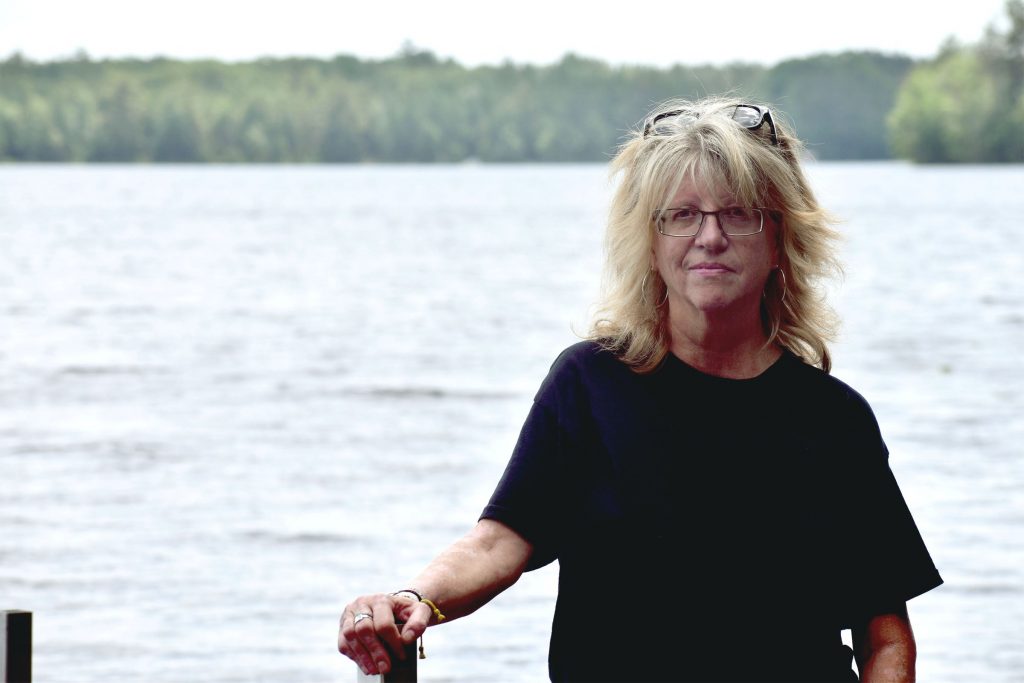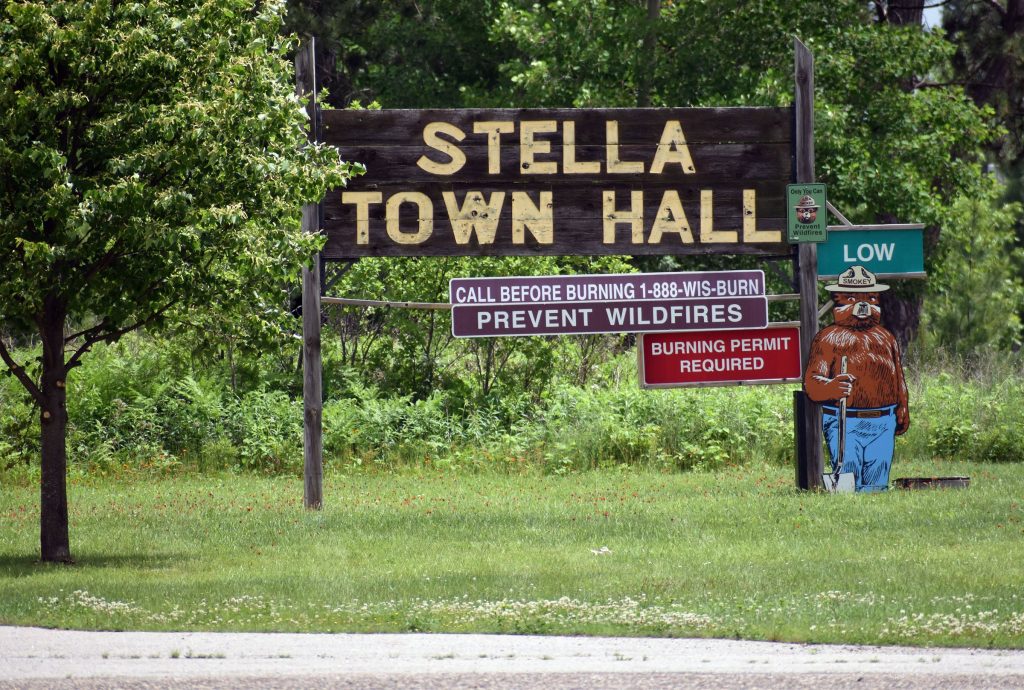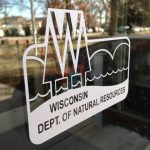Sludge is Widely Used As Fertilizer, But It Could Include High Levels of PFAS Contamination
Sludge and septage are spread across around half a million acres statewide, but most of it has never been tested for PFAS.
On a Saturday in June, Nancy Sattler bats away flies while standing in the shade of the Moen Lake boat landing near the town of Stella. With the sun’s sweltering heat, it’s exactly the kind of humid day that leads people to escape to the water.
“There were neighbors of mine who were very reluctant to even go in the water or allow their grandchildren in the water,” Sattler said.
Sampling of the Moen Lake Chain in 2023 found PFAS levels up to 4 times higher than Wisconsin’s surface water standards for the chemicals. Testing of private wells has also revealed PFAS levels among the highest concentrations found in drinking water anywhere in the nation. More than one-third of 241 wells tested so far have levels of the chemicals that are concerning to state health officials.

Nancy Sattler, former president of the Moen Lake Chain Association, said she and her neighbors were worried when they first learned of high PFAS levels in the lakes. Sattler is seen here at the Moen Lake boat landing on June 21, 2025. Danielle Kaeding/WPR
The Wisconsin Department of Natural Resources has identified paper companies as primarily responsible for the contamination, which likely came from spreading PFAS-laden sludge from the Rhinelander paper mill. Sludge at wastewater plants, which is formed by treating waste from homes and industrial facilities, often contains the chemicals, which have been linked to serious health problems that include kidney and testicular cancers.
Contamination might be most acute in Stella, but the practice of disposing of industrial and municipal waste by spreading it on farm fields is hardly limited to the Oneida County area. About 1.2 million acres of land in Wisconsin are approved to receive industrial sludge, treated sewage sludge and septage. The waste is spread across roughly 500,000 acres each year or around 5 percent of the state’s nearly 9 million acres of harvested cropland.
And most of what is spread on the state’s fields has never been tested or monitored for PFAS.

A sign designating the Stella town hall on June 21, 2025. An investigation and site inspection has found widespread PFAS contamination around the town of Stella in Oneida County. Danielle Kaeding/WPR
Low-cost alternative to fertilizer may pose PFAS risks
Treated sewage sludge, or biosolids, is beneficial to soil and often used by farmers as an alternative to fertilizer for growing crops. Sludge saves farmers money because it’s often provided for free, said Steve Warrner, statewide site review coordinator for the wastewater program at the Wisconsin DNR.
“It’s a win-win for the farmer in that they can get a relatively low-cost source of fertilizer,” Warrner said. “But also it’s often an economic reuse option for the facility compared to taking that to a wastewater treatment plant or to a landfill.”
Even so, some farmers in states like Maine and Michigan have been forced to shut down due to contamination. Now, farm groups say PFAS-contaminated biosolids have sparked fear among Wisconsin farmers. Democratic Gov. Tony Evers and Republican lawmakers have been seeking solutions to address PFAS, but they have yet to agree on a path forward.
In the meantime, as many as 1,400 industrial facilities, municipal plants and septage businesses currently have wastewater discharge permits or septage licenses with the state, according to the DNR. Of those, the agency estimates up to 700 may spread industrial sludge, sewage sludge or septage in any given year. Last year, millions of gallons of waste were spread on land in Wisconsin.
While biosolids from these facilities are tested for heavy metals and pathogens, few states widely test their sludge for the chemicals because the Environmental Protection Agency doesn’t require testing. The DNR last year began requiring facilities to test their sludge for PFAS as part of reissuing wastewater permits every five years, said Fred Hegeman, the DNR’s statewide wastewater residuals coordinator.
“(Industrial facilities) aren’t testing for it, so that’s why we’re putting it into permits,” Hegeman said.
As of spring, though, the initial round of sampling data obtained by WPR shows a fraction of permitted or licensed facilities had tested their biosolids for PFAS. A WPR analysis found more than one-third of 130 municipal and industrial facilities had PFAS levels in sludge for which the DNR recommends investigating and reducing the source of the chemicals. The remainder, more than 1,200 facilities, have not yet been required to test because their permits have not yet been renewed.
Data shows at least three municipal plants had levels of significant concern to state regulators. In such cases, the department’s interim strategy for biosolids states the DNR should not approve new land application sites and alternative treatment or disposal should be arranged. The state’s targets are approximate, and regulators say they’re first pursuing voluntary compliance to reduce PFAS levels in biosolids.

Samples are collected as part of a site inspection into PFAS contamination in the Stella area conducted by the DNR on behalf of the EPA. Screenshot from DNR documents
Paper companies deny spreading sludge with dangerous PFAS levels
In Stella, the DNR tested fibercake, or industrial paper sludge, from the Rhinelander mill now owned by a subsidiary of the Finland-based company Ahlstrom. Testing has shown combined levels for two of the most widely studied chemicals, PFOA and PFOS, around 2 parts per billion. That’s far below concentrations that trigger action under the state’s strategy for PFAS in biosolids.
But the mill has spread the material on farm fields in the Stella area since the 1980s. The DNR’s website states current PFAS concentrations may be lower than levels in biosolids spread decades ago.
Tricia Schwartz, communications manager for Ahlstrom, said in a statement the company produces products using its own greaseproof technology that doesn’t contain PFAS.
“Ahlstrom acquired the Rhinelander Mill in 2018 and has not used PFOA or PFOS in the Rhinelander Mill’s manufacturing process,” Schwartz said.
In a class action lawsuit, Stella residents are accusing the company as well as former owner Wausau Paper and others of polluting their wells. They say the mills “knew or should have known about the inherent risks and dangers involved in applying PFAS-containing waste on farmlands,” according to the lawsuit. In court filings, Ahlstrom denied its companies or Expera Specialty Solutions LLC spread paper mill sludge containing dangerous PFAS levels on fields in Oneida County, as has Wausau Paper.
Minnesota-based PFAS manufacturer 3M admits it sold PFAS products to the mill, but it denies allegations that the company should have known its products could cause health risks by contaminating groundwater or spreading sludge containing the chemicals on farmland.
Mark Marek, a year-round resident on Moen Lake, said companies like 3M and DuPont knew their chemicals were harmful.
“They withheld it, just like cigarette manufacturers (who claimed) smoking was safe,” Marek said. “Well, come to find out later, it’s not — and they knew that it wasn’t. It’s the same thing with these PFAS manufacturers.”
According to documents, 3M knew for decades of the health risks posed by the chemicals. Last year, The New York Times reported that 3M knew as early as 2000 that high levels of PFAS were turning up in sewage sludge. The company is facing billions of dollars in lawsuits, including as much as $12.5 billion being paid out by 3M to contaminated water systems.
EPA says PFAS-laden biosolids might pose risks at low levels
As research on PFAS progresses, the EPA warned in January that there might be human health risks tied to spreading PFAS-contaminated biosolids on land. Findings of an agency draft assessment indicate health risks might exceed the EPA’s safety thresholds in some cases where a farmer spreads sludge containing as little as 1 part per billion of PFOA or PFOS.
Such research highlights the importance of testing sludge for PFAS and examining historical spreading practices on Wisconsin farmland, said Sara Walling, water and agriculture program director for Clean Wisconsin.
“Not only is there the opportunity for those biosolids and the PFAS within them to leach downward into groundwater sources, which is what we’re seeing in Stella, but there’s also the opportunity then for that plant uptake, and therefore food chain impacts,” Walling said.
Farm families who get most of their diet from food grown on lands contaminated by PFAS-laden sewage sludge face higher risk, the EPA warned. The highest risk came from drinking milk or eating eggs and beef from pasture-raised cows that had consumed contaminated water or forage. People also faced higher risks from drinking contaminated water and eating fish from lakes affected by runoff from lands where PFAS-contaminated sewage sludge had been spread.
Sattler, who is 62, said in June that she had no problem eating fish from area lakes.
“Personally, I realize there’s nothing I can do about it,” she said. “I’ve probably been ingesting it for a long time.”
The EPA’s assessment doesn’t suggest risks to the general food supply. Even so, there are no state or federal limits on the chemicals in food.
Wisconsin researchers are studying the potential uptake of PFAS in crops. Last year, they began growing clover and alfalfa in field soil that had received biosolids spiked with PFAS, said Geoff Siemering, a staff scientist with the University of Wisconsin-Madison Division of Extension. The UW-Madison study was conducted in collaboration with researchers from UW-Stevens Point and UW-Platteville. Siemering said early results show the crops absorbed some of the chemicals.
“Even from a single application, you’re seeing some plant uptake,” Siemering said. “Would it be toxic to an animal at that level? That we don’t know because we’re not running that kind of a study.”
The EPA has found a single application of sewage sludge may cause human health risks in some cases. But the risks posed by contaminated biosolids to each farm depends on site-specific factors, as well as the rate and frequency of spreading. WPR reached out to at least half a dozen farmers, landowners or businesses approved to receive sewage sludge on fields in the town of Stella. Most didn’t respond.
One farmer who did not want to be named said some might be reluctant to talk about PFAS contamination or test for the chemicals because they’re worried they’ll be forced out of business.

A farm field in the Stella area as seen on June 21, 2025. A recent site inspection detected high PFAS levels on farm fields in the surrounding area, indicating industrial contamination. Danielle Kaeding/WPR
As states act, political gridlock delays action in Wisconsin
Some states have taken a more aggressive approach to regulating the chemicals. In Maine, the spread of sludge containing PFAS has contaminated 90 farms, prompting creation of a $60 million fund to buy contaminated farmland and provide direct support for farmers. The state is the first and only one to ban spreading sewage sludge on land.
And farmers are not to blame, said Jason Mugnaini, executive director of government relations for the Wisconsin Farm Bureau Federation. In an October legislative hearing, he said farmers spread biosolids from municipal wastewater treatment plants with approval from state agencies.
“These practices seemed win-win once upon a time. They recycled valuable nutrients, improved soil health, reduced landfill waste — all good initiatives,” Mugnaini said. “Unfortunately, to discover PFAS compounds in some biosolids has created fear and uncertainty for farmers who did nothing wrong.”
Mugnaini said farmers support a Republican proposal to create exemptions under the state’s spills law for individuals like farmers who spread PFAS-contaminated biosolids. State Sen. Eric Wimberger, R-Oconto, and Rep. Jeff Mursau, R-Crivitz, reintroduced bills to create grant programs to address PFAS and exempt certain individuals and facilities from paying for PFAS contamination they didn’t cause.
“The first step is to make sure that there’s help available for the practical aspect of getting clean water,” Wimberger told WPR. “The second is to make sure that regular people who are really victims of pollution have that legal cover, so they don’t get forced into a double bind of either drinking contaminated water and risking some sort of illness or trying to figure out their problem and losing everything they worked for.”

Wisconsin state Sen. Eric Wimberger, R-Oconto, is photographed during a state Senate session on June 28, 2023, in the Wisconsin State Capitol building in Madison, Wis. Drake White-Bergey/Wisconsin Watch
Evers and GOP lawmakers have clashed over addressing PFAS contamination. Evers vetoed a similar bill last year over limits to the DNR’s authority and fears it could let polluters off the hook. The last two-year state budget set aside $125 million in a PFAS trust fund to deal with the chemicals.
In his budget this year, the governor proposed an exemption to the state’s spills law to ensure that residents and farmers wouldn’t be held financially responsible for cleaning up PFAS, but Republicans removed that from the budget. And the Legislature has refused to release aid over Republican fears that the money would be used as a “DNR slush fund.”
As solutions have been bogged down by political gridlock, the DNR has also faced legal challenges to its authority to test for and clean up PFAS. In June, the Wisconsin Supreme Court upheld the agency’s power to address the chemicals under the state’s spills law.
Even so, the DNR has said it doesn’t have the resources or staff to address the problem on its own. The agency said most of the PFAS trust fund could be spent addressing PFAS contamination at airports alone.
In the meantime, the DNR is identifying facilities with the highest concentration of the chemicals in industrial sludge and biosolids — as new testing requirements are phased in when permits are renewed.
“We’re counting on industry to take the lead here and start to diminish the amount of PFAS that’s being used,” said Hegeman from the DNR.
As that work is ongoing, Marek, one of the Stella residents, said the state needs to get a handle on the scope of contamination and where it’s located to determine where it should devote state funds.
“We know it’s here,” Marek said. “I just don’t know where else it is.”
Sludge is used as fertilizer across Wisconsin. How much is tainted by PFAS? was originally published by Wisconsin Public Radio.
If you think stories like this are important, become a member of Urban Milwaukee and help support real, independent journalism. Plus you get some cool added benefits.






















